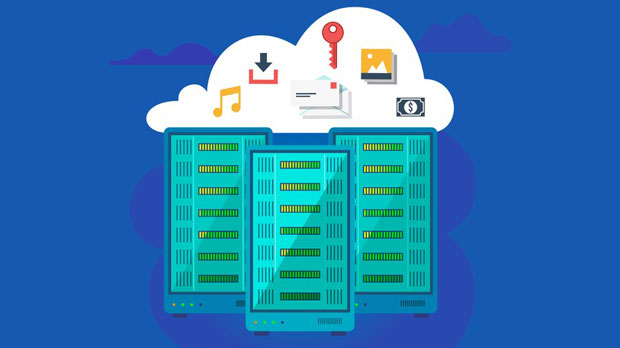The reliability of a proxy provider is a crucial aspect when selecting a socks5 proxy service. sock s5 proxies are widely used for anonymous browsing, secure data transfer, and bypassing geographic restrictions. However, not all proxy providers offer the same level of reliability, and it is essential for users to compare them based on several factors like uptime, speed, security, and customer support. This article delves into the most important elements that define the reliability of a SOCKS5 proxy service and offers a comprehensive comparison of top proxy providers. By analyzing these factors, users can make informed decisions to ensure seamless and secure online experiences. Understanding the Importance of SOCKS5 Proxy ReliabilityWhen it comes to proxy services, SOCKS5 is considered one of the most advanced and flexible protocols. Unlike other proxies, SOCKS5 does not alter the network protocol, allowing it to support more diverse applications such as torrenting, gaming, and secure communications. However, for SOCKS5 to fulfill these purposes effectively, the reliability of the proxy provider is paramount.Reliability in this context encompasses a range of factors that affect the overall user experience. These factors include uptime, which refers to the availability of the proxy server, the speed of the proxy connection, the security and encryption level offered by the proxy provider, and the quality of customer support when issues arise.Key Factors Influencing SOCKS5 Proxy Reliability1. Uptime and StabilityUptime is one of the most significant factors in determining the reliability of a SOCKS5 proxy. A proxy service that frequently experiences downtime or instability can disrupt your browsing and online activities, leading to frustration and potential data loss. Therefore, it is essential to choose a proxy provider that guarantees high uptime, preferably above 99%.Many top-tier proxy providers use redundant systems to ensure that their servers remain online even if one server encounters issues. Some also monitor their networks around the clock, quickly resolving any technical problems that could affect uptime. Reliability is closely tied to the infrastructure and server management strategies adopted by the proxy provider.2. Speed and PerformanceAnother critical factor is speed. SOCKS5 proxies are often used for bandwidth-intensive activities such as streaming, downloading large files, or gaming. If the proxy provider's network is slow or unstable, it will severely impact these activities. A reliable SOCKS5 proxy provider should offer consistent and fast speeds without frequent lags or interruptions.Speed is affected by various factors, including the physical location of the proxy servers, the provider's network capacity, and the number of users sharing the proxy resources. Providers with a large pool of servers across different regions tend to offer better speeds and more reliable connections.3. Security and AnonymitySecurity is a non-negotiable aspect of any reliable SOCKS5 proxy service. Since SOCKS5 proxies are often used for tasks requiring anonymity, it is vital that the proxy provider implements robust security protocols to protect user data. A reliable SOCKS5 proxy provider should offer strong encryption, especially for users who are concerned about privacy. Moreover, the provider should have a strict no-logs policy to ensure that user activities are not monitored or stored. Some top proxy providers also offer additional security measures such as IP masking and DNS leak protection.4. Customer SupportCustomer support is another crucial element that affects the overall reliability of a SOCKS5 proxy service. If an issue arises with the proxy connection, users need quick and efficient assistance to resolve the problem. A proxy provider with a responsive and knowledgeable support team can make all the difference, especially when technical issues arise during critical online activities.Look for a provider that offers 24/7 support through multiple channels such as live chat, email, and phone. A good support team should be able to address issues promptly and effectively, ensuring minimal downtime for users.Comparing Leading SOCKS5 Proxy ProvidersNow that we have outlined the key factors that influence SOCKS5 proxy reliability, let's look at how some leading proxy providers compare in terms of these elements.1. Provider AProvider A offers an impressive track record with a guaranteed uptime of 99.9%. The provider has a robust network of servers located across multiple continents, ensuring low latency and fast speeds. Security-wise, Provider A uses advanced encryption protocols and has a strict no-logs policy. Customers have reported reliable and responsive customer support, with most issues resolved within minutes. However, some users have reported occasional slowdowns during peak hours, which could be attributed to high demand on certain servers. Nevertheless, Provider A is generally regarded as one of the most reliable options in the market.2. Provider BProvider B is known for its excellent performance and high-speed proxies. With servers in over 50 countries, users can easily find a fast and stable server for their needs. The provider also offers robust security features, including strong encryption and a no-logs policy. In addition, Provider B has a reputation for excellent customer support, with 24/7 availability.One downside to Provider B is that its pricing is on the higher end, which may not be ideal for users looking for more affordable options. Additionally, while the provider maintains high uptime, users in remote locations have occasionally reported slower speeds.3. Provider CProvider C offers a more budget-friendly solution for SOCKS5 proxy users. While its server network is smaller compared to other providers, it still offers reliable performance and decent speeds. Security is solid, with strong encryption and a no-logs policy. The customer support team is responsive but may take a little longer to resolve complex technical issues.One major advantage of Provider C is its pricing, which is much lower than that of many competitors. However, users in regions far from the provider's servers might experience slower speeds, especially during high-traffic periods.4. Provider DProvider D is a well-established name in the proxy market, offering high-performance SOCKS5 proxies with excellent uptime and speed. Their servers are well-distributed globally, providing fast and stable connections for most users. Security is top-notch, with features like DNS leak protection and strong encryption.However, the provider's customer support has been criticized for being slow at times, and its pricing structure may not be suitable for users on a tight budget. Additionally, while Provider D excels in most areas, it may not be as suitable for those seeking ultra-fast proxies for high-demand tasks.Conclusion: How to Choose the Right SOCKS5 Proxy ProviderWhen comparing SOCKS5 proxy providers, reliability should be your primary concern. Factors such as uptime, speed, security, and customer support can significantly affect your overall experience. Although different providers excel in various areas, it is essential to choose a service that balances all these factors based on your specific needs.If you're looking for high-speed performance and strong security, providers with a large server network and robust encryption protocols are recommended. On the other hand, if you're on a budget, there are still affordable options that provide good service, although you may need to compromise on server locations or speeds.In any case, thorough research and trial periods can help ensure you select the most reliable and suitable SOCKS5 proxy provider for your online activities.
Sep 18, 2025



































































